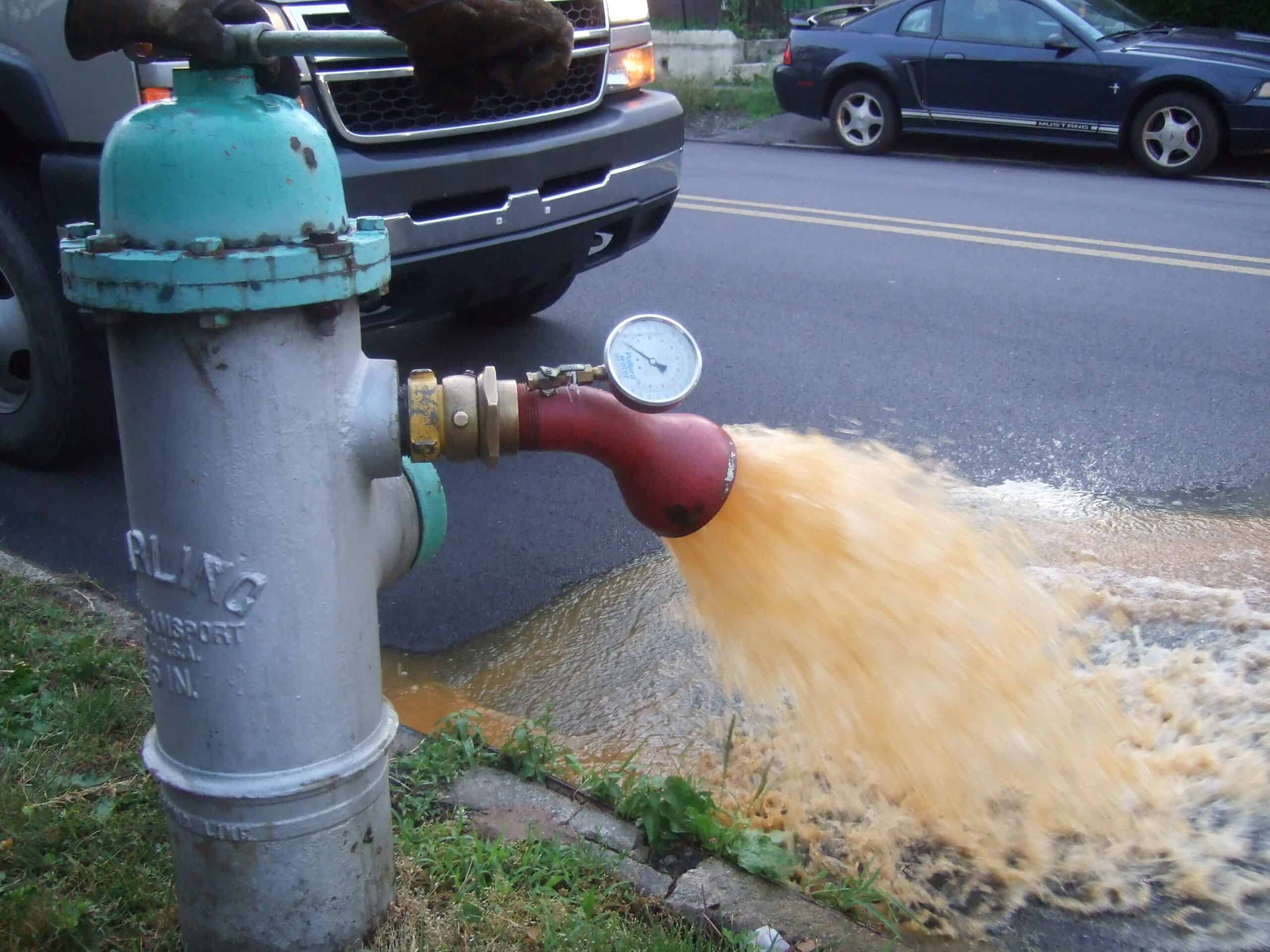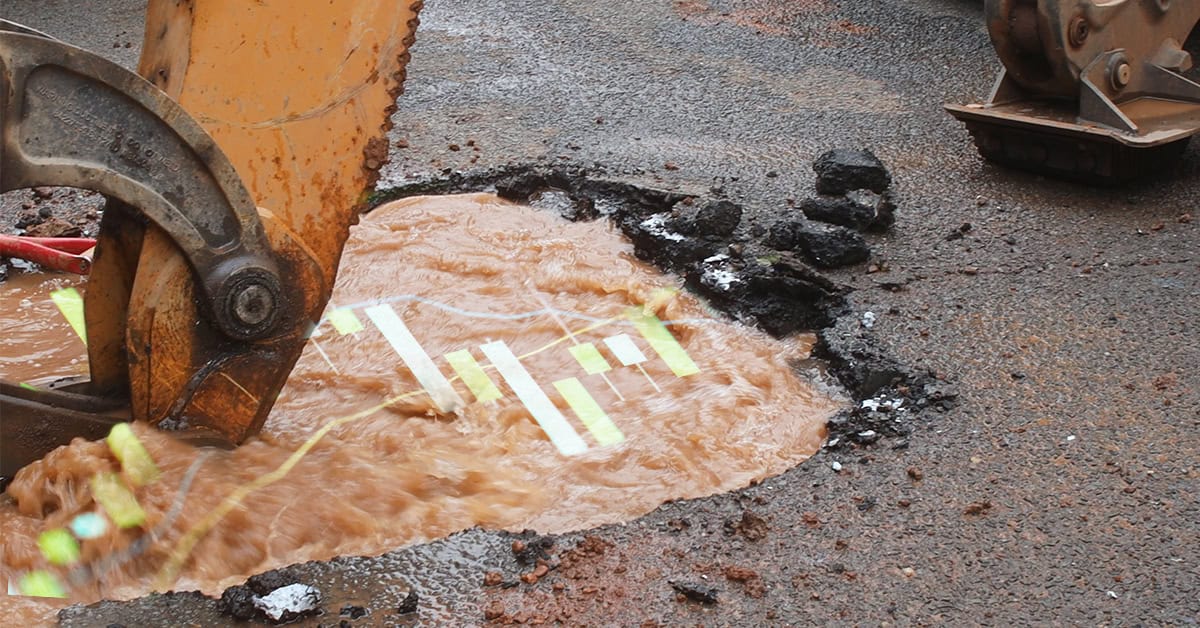Are you looking for a hydraulic modeling software and cannot decide which to buy? In North America, most utilities and consulting companies use one of two products: Bentley’s OpenFlows WaterGEMS or Innovyze’s InfoWater. Both can help you analyze, design, and optimize water distribution systems, so which one is right for you? We interviewed some consultants that have used both products to help you make an educated decision. Below are some of the key findings:
Intuitive Interface – Ease of Use
The intuitive user interface in WaterGEMS makes it easy to use and, therefore, easy to train staff. WaterGEMS allows the user to easily change symbology, colors and annotations. FlexTables can be customized to show input data, calculated results, and a user’s defined fields in one table. There is also the ability to graph across scenarios, different element types, and attributes. WaterGEMS makes fixing errors in your model easy by listing all errors after one validation run. Units are always clearly displayed in WaterGEMS and can easily be changed by right-clicking on any displayed unit.
InfoWater’s interface and the fact that it is built on ArcGIS can make it challenging to use. InfoWater offers the ability to change symbology, but it is not persistent and must be set up from scratch every time. Tabular reports in InfoWater are not customizable and require you to set up multiple tables to get all the data (standard, range, fire flow, etc.). InfoWater’s graphing capabilities limit the user to combine a maximum of two attributes for different element types and doesn’t allow for graphing across scenarios. To compare results, the user must have multiple graphs opened at once, which makes it difficult to compare results. InfoWater has no “undo” option, and when there are errors in the model, it can only generate one at a time. InfoWater is also not as clear and flexible with its units – the user is limited to the default US or SI units and often doesn’t get to see units listed for an attribute.
Platform Flexibility
A hydraulic modeling project will require the use of multiple applications to complete the project. For example, many engineering firms keep water network records saved in ArcGIS, use a hydraulic modeling application to analyze and design changes to the network, and utilize a CAD application for their drawings. Therefore, it is important to be able to work in-between these platforms.
WaterGEMS is available as a stand-alone platform or on ArcGIS, MicroStation, and AutoCAD or Civil3D. It allows for seamless interoperability between these platforms, enabling WaterGEMS users to optimally analyze, design and implement their design.
InfoWater is built on ArcGIS and runs only on ArcGIS. ArcGIS can run very slow when opening or moving around within a file and can suffer from crashes. While it is a great benefit to be able to work within ArcGIS, it also presents a challenge to InfoWater users who can only work within ArcGIS.
Training and Support
WaterGEMS training and support is available 24/7. Bentley frequently posts educational content to their YouTube channel. Bentley Communities is a great resource to find solutions to problems or ask questions about WaterGEMS, although most questions have likely already been answered in Bentley Communities. By purchasing WaterGEMS through a Virtuoso Subscription, users get access to expert services, tailored training, and technical support via keys that are included with their purchase.
InfoWater has a user forum that has an average of six questions answered per year, which doesn’t compare to the six questions answered every two days in Bentley Communities Hydraulic Forum. This means it is less likely to quickly find a solution to an InfoWater problem from a Google search. InfoWater educational videos posted by Innovyze on YouTube are outdated and not a great source for learning. Innovyze offers limited paid training per year, and technical support requires an additional purchase of InfoCare.
SCADA Data Synchronization
A hydraulic model can only accurately project new cases in a system when the initial conditions in the model match the existing conditions of the system. With supervisory control and data acquisition (SCADA), a modeler gains access to a current system’s status and historical trends to assist in calibrating a model.
WaterGEMS offers SCADAConnect to calibrate model parameters. SCADAConnect can be used to directly connect with and bring in field data from SCADA or other data sources. WaterGEMS has the capability to re-calibrate based on this field data and determine the location of leaks at no additional cost.
InfoWater offers SCADA capabilities which can be used to bring in field data to calibrate model parameters. However, it requires the SCADA data to be saved in your device as a SCADA output file that must adhere to the file format that InfoWater can read. Therefore, there isn’t a direct connection to a SCADA server. InfoWater can also calculate water leaks in a network, but only through an add-on for an additional cost.
Suites and Additional Options
Unlike InfoWater, WaterGEMS includes all modules. You will not need to purchase additional suites or additional options. For example, WaterGEMS already includes uni-directional flushing and multi-species analysis. These same features can cost tens of thousands of dollars on top of the cost of an InfoWater Executive Suite license.
Accurate Representation of Element Types
WaterGEMS has a vast amount of element types including, but not limited to, pipes, junctions, hydrants, valves, air valves, and check valves. WaterGEMS allows color coding and annotation of individual elements which creates clear visual representation of elements.
A report may be generated for a specific element type, such as hydrants.
InfoWater only has six element types, which are: junction, tank, reservoir, pump, valve, and pipe. Junctions may represent junctions, hydrants, and transient elements. There is also only one element for the many different types of valves. When generating a report for junctions, everything within junctions is included in the report, even if the user only needs to see hydrants.
Conclusion
WaterGEMS and InfoWater are leaders in the hydraulic modeling industry, and it is important to understand which product best fits your needs. This blog has outlined some of the most important aspects of the two applications such as ease of use, platform flexibility, training and support, add-on costs, and element representation. These facets give potential users a strong understanding of what each product has to offer and a better understanding of which product is right for them. If you are ready to make a purchase or have a question about WaterGEMS feel free to reach out to our Bentley’s eStore team.
A special thank you to Diego Rodriguez for his contributions to this blog.








